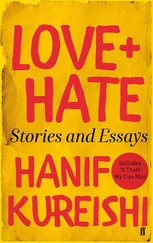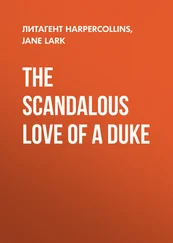My love for you was absolutely groundless, as you’d pointed out that night in January in the company of my husband. It was about the only time you ventured an opinion past your sexy cryptic silence, the silence that I’d written on. But what does “groundless” really mean? My love for you was based upon a single meeting in December which you finally described in an exasperated letter to my husband as “genial but not particularly intimate or remarkable.” Yet this meeting had driven me to write more words to you than there were numbers on that EDL, 250 pages and still counting. Which in turn led to the rental car, this rainy drive along Route 126, this plan to visit you.
At that time in your life, you said, you were experimenting with never saying No.
I got off the plane at 7 buzzed with warm air, palms and jetlag serotonin, picked up a rental car and started north on 405. But I was nervous too, like walking through a script you know’s already been written except the outcome’s been withheld. Not giddy nervous. Nervous as in dark with dread. My outfit’s dreadful. I watch the road, smoke and fiddle with the radio. I’m wearing black Guess jeans, black boots, an iridescent silver shirt, the black bolero leather jacket that I bought in France. It’s what I planned but now it’s making me feel gaunt and middle-aged.
Eleven weeks ago I’d tailed your gorgeous car along 5 North en route to that “genial but not particularly intimate or remarkable meeting” at your house between my husband, you and I. And everything then seemed different: delicious, charged. The three of us got very drunk and there was all this strange coincidence. There were just three books in your living room. One was Gravity & Grace , the title of my film. I was wearing the snake pendant that I’d bought in Echo Park; you told a story about shooting a video outside your house when a snake magically appeared. All night I was playing Academic Wife, helping you and Sylvère Lotringer exchange ideas and then you mentioned David Rattray’s book and that was very weird. Because all night long I’d felt his ghost beside me and David had been dead almost two years. You looked at me and said: “You seem different than the last time that we met. As if you’re ready to come out.” And then I did—
What touched me most that night was how freely you admitted being lonely. That seemed so brave. Like you’d accepted it as the price for clearing all the garbage from your life. You told us how you stayed alone most nights, drinking, thinking, listening to tapes. If you’re prepared to do something anyway it doesn’t matter if you’re afraid. You were the greatest Cowboy. And Sylvère and me, with our two-bit artworld hustles, projects, conversation skills—well, we were Kikes. You made me ready to recant on 15 years spent studying wit and difficulty in New York. I’d become a hag. And you were beautiful. Let the desert burn it out.
And now I’m heading out to visit you again alone along Route 126 but something’s wrong. Nothing takes me past my body, plain-faced thin and serious, crammed into this rental car. I’m a schoolteacher in flashy clothes. The jeans are tight. I have to pee. I’m sensing that the farthest point of synchronicity is fear and dread.
* * *
It was nearly dark when the bus arrived in Chetumal. Friday night —a shopping night in this five block city of appliance stores. A city founded so Belizeans and Guatemalans who weren’t rich enough to shop in Dallas or Miami could still buy duty-free TVs. The benefits of civil war? I took a taxi to the Guatemalan embassy but it was closed. Fittingly, there’s a huge new glass and steel Museum of the Mayan Indian with very little in it at the edge of Chetumal. On the bus all afternoon I’d been reading the autobiography of Guatemalan rebel leader Rigoberta Menchú and thinking about Jane Bowles. Two different kinds of misery, alertness. After that, I checked in to a twenty dollar a night hotel.
The next morning I got up early to take a walk around Chetumal. According to the map it was a coastal town. The bus to Guatemala didn’t leave ’til later on that afternoon. I caught a local city bus and time slowed down. Suburban Chetumal looked kind of like Mar Vista—stucco bungalows and tiny yards—except there were no bus stops, the bus stopped for anyone who flagged it down. And then seven miles and 60 minutes later the bungalows thinned out and the bay leapt out of nowhere when the road curved round. Sleepy dullness opening up to startlingly blue water, every particle of air locked into a glistening frame. The coastal land was jungly. I got off and walked along a jungly path to a waterfront cafe at the end of a round peninsula but it was closed. I gasped when I saw a tree monkey tethered to a pole. Finally a man came out and said in English that he’d bought the cafe and the beachfront and the monkey after working in a car shop in America. The monkey didn’t seem to mind. I watched it, squatting, tracing circles on the ground. Its fur was dusty, cream smudged with cinders. It had ten perfectly articulated fingers, scrunched up toes.
* * *
Jennifer Harbury was 39 years old when she met Efraim Bamaca in a rebel training camp in the Guatemalan highland jungle. Until that time her life had been one dry and dusty road. From Baltimore to Cornell. From Cornell to North Africa, then to Afghanistan, backpacking around the outer reaches of these countries without any special plans. She met exiled Palestinians. She saw a lot of poverty and was moved to ask: Must people starve so that we can live the way we do? It’s a question that can drive you crazy. Asking it sent Jennifer to Harvard Law School at a time when being a feminist meant refusing to be a co-dependent fuck-up. Lots of women were finding self-empowerment through careers in corporate law. But Jennifer-the-bad-feminist took a job defending immigrants in East Texas at a Legal Aid storefront. Many of the clients were Guatemalan Mayans facing deportation. People of another timescape who sat patiently on plastic chairs radiating thick and strange charisma. Jennifer wanted to know more. Unlike, perhaps, her colleagues, or the Texas lawyer she’d been married to for just a little while, “Mayan people have an ability to be completely communal. They are very humble, very sweet, very giving.” Her work took her to Guatemala to substantiate theft claims for asylum from the war. In Guatemala City she met members of the underground and she became involved. 1989 saw her reaping the career rewards for twenty years of impassioned brilliant activism during the Bush and Reagan years: a battered pickup truck, a cheap apartment paid for by loans or gifts from old friends, a contract with an obscure small press in Maine for a book of oral histories she’d made with Guatemalan activists and peasants. Since Jennifer’s a girl, we can’t help measuring the distance between her burning vision and her sad and scrappy days when we think about her life. Even the article lionizing her in the New York Times calls her “quirky.” “Really,” an old school friend told the Times the week Ted Turner bought the character rights to her life, “she was a tank .”
* * *
The story of Route 126 reads like a secret history of southern California. It runs west into Ventura County from Valencia, a former Indian burial ground. In the 1940s, Val Verde and Stevenson’s Ranch were Black upper middle class resorts. Before the gated subdivisions of “northern LA county” were built here in the ’80s, corpses were often dumped around the desert near Valencia. These facts inspired the horror movie Poltergeist . Of course Valencia is also the location of the Disney-funded art and animation school, CalArts. “Valencia is Smiles, Not Miles Away,” a downtown billboard of a happy lion boasts. The locals like to call Route 126 “Blood Alley” for its freakily high number of fatal car accidents.
Читать дальше
Конец ознакомительного отрывка
Купить книгу












